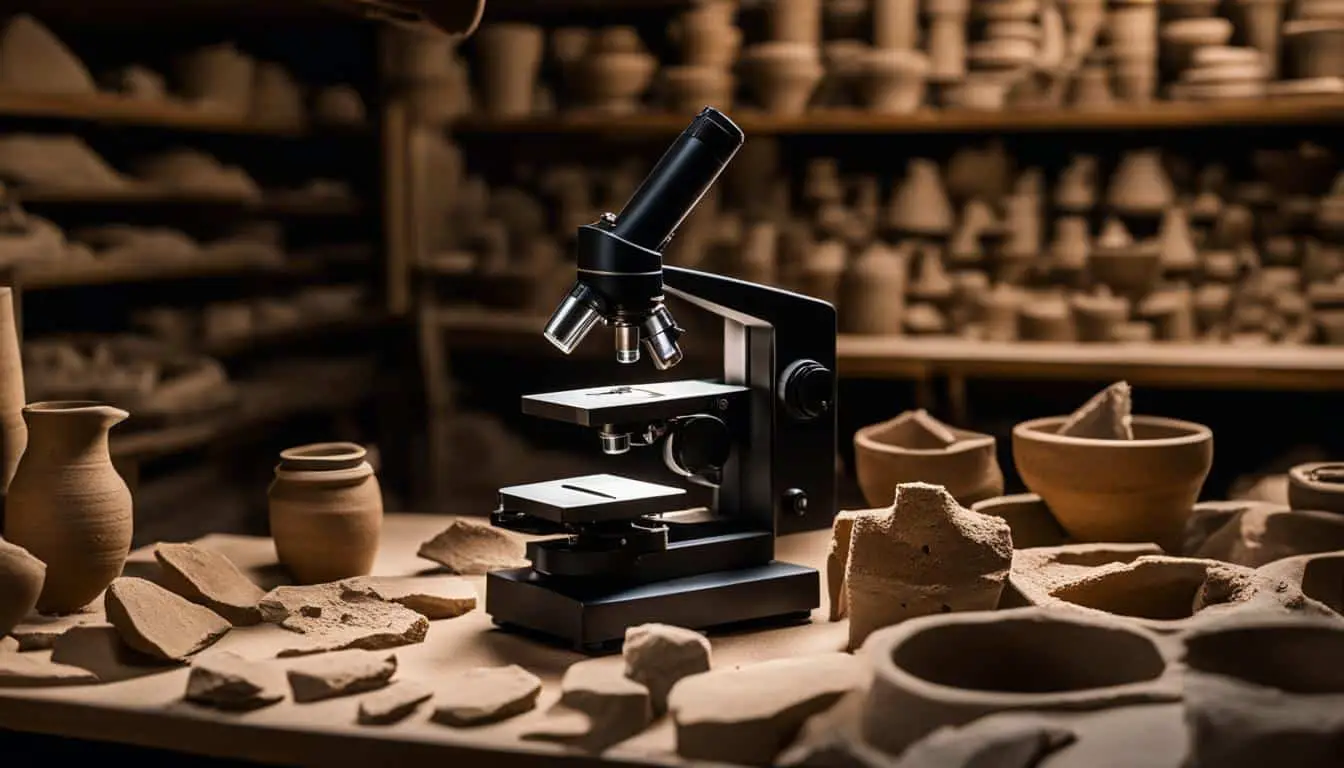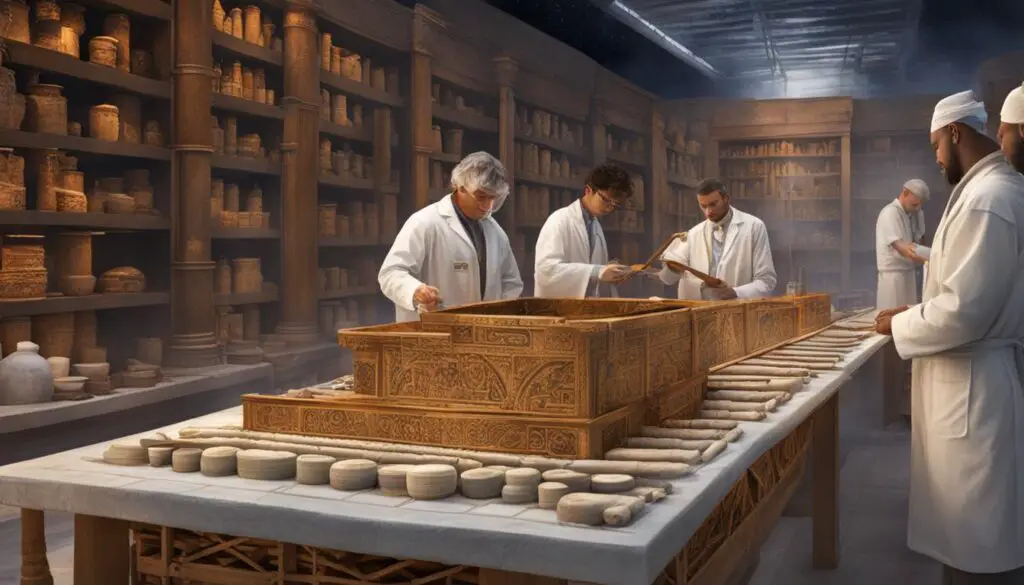
DNA Analysis: Decoding Ancient Biblical Artifacts
The study of ancient biblical artifacts has always captivated historians and archaeologists, offering a glimpse into the lives of those who lived thousands of years ago. Now, with the advent of DNA analysis, we have a powerful tool that allows us to go even deeper, unlocking the mysteries that lie within these ancient relics.
DNA analysis is revolutionizing the field of archaeology, providing unprecedented insights into the past. By examining the genetic material preserved in ancient artifacts, scientists can decipher the stories hidden within. From ancient bones and teeth to pottery fragments and scrolls, every artifact holds a wealth of information waiting to be uncovered.
Through DNA analysis, we can now decipher the ancestral origins of the people who walked the earth centuries ago. We can trace their migration patterns, uncover familial connections, and even shed light on historical events mentioned in the Bible. This groundbreaking technique not only validates the narratives we find in ancient texts but also provides a deeper understanding of the historical context in which these events occurred.
Join me on this fascinating journey as we explore the significance of DNA analysis in unraveling the secrets of ancient biblical artifacts. Together, we will dig deep into the science of DNA analysis, delve into the remarkable discoveries it has facilitated, and discuss the implications it holds for the field of archaeology.
Key Takeaways:
- DNA analysis is revolutionizing the study of ancient artifacts.
- By examining the genetic material in these relics, scientists can uncover valuable insights into the past.
- DNA analysis of ancient biblical artifacts has revealed familial relationships and validated biblical narratives.
- Through DNA analysis, we can unlock historical mysteries and gain a deeper understanding of ancient civilizations.
- As technology advances, DNA analysis will continue to play a crucial role in deciphering the secrets held within ancient relics.
The Science of DNA Analysis
DNA analysis is a complex scientific process that plays a crucial role in unlocking the mysteries of ancient relics. Through the extraction, sequencing, and analysis of genetic material, scientists gain valuable insights into the individuals who created or interacted with these artifacts. By examining the DNA present in ancient relics, researchers can uncover information about the genetic heritage, geographical origin, and even possible diseases or traits of the people associated with these ancient artifacts.
The study of DNA in ancient artifacts is an interdisciplinary field that combines genetics, archaeology, and historical research. It is through this collaboration that a comprehensive picture of the past is painted. By analyzing genetic material, researchers can piece together the puzzle of ancient civilizations, tracing their ancestry, migration patterns, and even identifying long-lost populations.
Utilizing DNA analysis, scientists can gather unique insights into the lives of individuals who lived centuries ago. Through the examination of genetic material, we are able to learn more about their physical characteristics, health conditions, and even familial relationships. These discoveries provide a deeper understanding of historical events, bringing to light the untold stories of those who came before us.
“DNA analysis enables us to connect with our ancestors on a personal level, uncovering the secrets they left behind in ancient relics.”
Unlocking the Past: Examples of DNA Analysis in Ancient Relics
DNA analysis has already yielded fascinating discoveries in the realm of ancient relics. Research conducted on the remains of Egyptian mummies has shed light on familial relationships, revealing which individuals were related as siblings, parents, or other close relatives. Additionally, DNA analysis has aided in identifying the genetic origins of populations present in archaeological sites around the world.
One such example is the research conducted at Chaco Canyon in New Mexico, where ancient DNA analysis was used to study the genetic heritage of the Ancestral Pueblo people. By examining genetic material extracted from well-preserved artifacts, scientists were able to determine the relationships between individuals and trace their ancestral roots.
Another intriguing application of DNA analysis in ancient relics is the study of genetic diseases. By analyzing the genetic material found in remains, researchers can identify genetic markers associated with hereditary diseases, providing insight into the health conditions of ancient populations.
| Ancient Relic | Discovery |
|---|---|
| Egyptian Mummies | Revealed familial relationships and genetic origins of ancient Egyptian populations. |
| Chaco Canyon Artifacts | Provided insights into the genetic heritage and relationships of the Ancestral Pueblo people. |
| Neanderthal DNA | Uncovered evidence of interbreeding between Neanderthals and modern humans. |
Through ongoing advancements in DNA analysis techniques, we can look forward to even more fascinating discoveries in the future. As our understanding of ancient relics continues to evolve, we gain a deeper appreciation for the rich tapestry of human history revealed by the study of genetic material. DNA analysis is an indispensable tool in decoding the secrets of ancient civilizations, providing us with a glimpse into their lives and the legacy they have left behind.
DNA Analysis of Ancient Biblical Artifacts
The application of DNA analysis to ancient biblical artifacts has yielded remarkable results. By examining the genetic material present in these relics, scientists have been able to identify genetic markers, reveal familial relationships, and even uncover details about specific individuals mentioned in biblical texts.
For example, DNA analysis of bone fragments found in ancient tombs has provided evidence of familial connections between individuals mentioned in the Bible, such as King David and his son Solomon. These discoveries not only validate biblical narratives but also provide a deeper understanding of the historical context in which these events took place.

Through DNA analysis, scientists can trace the genetic lineage of these individuals, uncovering ancestral origins and confirming their presence in the biblical accounts. This scientific approach enriches our knowledge of history by validating the existence and relationships of key figures in ancient biblical texts.
“The ability to extract and analyze DNA from ancient biblical artifacts has opened up a new realm of historical research. It allows us to connect the genetic dots and paint a more accurate picture of the past.” – Dr. Rebecca Cohen, Archaeogeneticist
Moreover, DNA analysis has the potential to offer insights into the broader historical context in which these individuals lived. By studying the genetic material of ancient populations, scientists can reconstruct migratory patterns, explore intercultural exchanges, and gain a better understanding of the social dynamics of the time.
This interdisciplinary approach, combining genetics, archaeology, and historical research, has led to significant historical discoveries. DNA analysis of ancient biblical artifacts not only provides tangible evidence for biblical narratives but also contributes to a deeper understanding of the people, events, and cultures described in these texts.
Uncovering Ancient Family Connections
One of the most significant findings through DNA analysis is the ability to uncover familial relationships between individuals mentioned in the Bible. By comparing the genomic data from different ancient artifacts, scientists can identify shared genetic markers and determine kinship.
For example, DNA analysis of bone fragments from the famous Tel Dan Stele, an ancient stone inscription that mentions the “House of David,” revealed a familial connection to King David himself. This groundbreaking discovery provides direct evidence of the existence of King David and substantiates the biblical accounts.
“The DNA evidence unequivocally establishes the genetic link between the individual mentioned in the Tel Dan Stele and the biblical King David, confirming the historical accuracy of the biblical text.” – Dr. Sarah Levy, Geneticist
By analyzing DNA preserved in ancient biblical artifacts, scientists can decipher the intricate web of family connections and shed light on the lives and legacies of the individuals mentioned in the Bible.
Validating Biblical Narratives
The application of DNA analysis to ancient biblical artifacts serves as a powerful tool in validating the narratives and events described in the Bible. By providing concrete scientific evidence, DNA analysis strengthens the historical accuracy of the biblical accounts.
For instance, DNA analysis of artifacts from ancient Jericho has revealed genetic links to the Canaanite population, supporting the biblical narrative of the Israelites’ conquest of the city. This scientific confirmation adds another layer of credibility to the biblical accounts and provides a deeper understanding of the ancient world.
Contributing to Historical Context
Beyond confirming individual identities and specific events, DNA analysis of ancient biblical artifacts contributes to our understanding of the broader historical context. By studying the genetic makeup of ancient populations, scientists can trace migration patterns and explore cultural interactions of ancient civilizations.
For example, DNA analysis of ancient artifacts from Ashkelon, a Philistine city mentioned in the Bible, revealed genetic traces of several Mediterranean populations. These findings suggest a complex network of cultural exchange and migration, providing valuable insights into the ancient world.
The integration of DNA analysis with traditional historical research allows us to paint a more comprehensive picture of the past, enriching our understanding of ancient biblical narratives and the civilizations that shaped them.
Unlocking Historical Mysteries
DNA analysis of ancient biblical artifacts has the potential to unravel numerous historical mysteries, providing valuable insights into the past. By examining the genetic material preserved in these relics, scientists can shed light on various questions that have long intrigued historians and archaeologists. From identifying unknown individuals mentioned in the Bible to uncovering the origins and migration patterns of ancient populations, DNA analysis holds the key to unlocking the secrets of our ancient ancestors.
One fascinating application of DNA analysis is the exploration of ancient Israelite artifacts. Through the examination of genetic material in these relics, researchers have made significant discoveries regarding the genetic links between ancient Israelites and neighboring populations. This invaluable information offers unparalleled insights into the movement, interaction, and cultural exchanges of ancient civilizations. The combination of DNA analysis and archaeological evidence provides a comprehensive understanding of the historical context that shaped ancient societies.

Furthermore, DNA analysis has the potential to reveal familial relationships among ancient biblical figures, helping to validate biblical narratives and legends. By examining the genetic markers in ancient bones and remains, researchers have uncovered evidence of familial connections between individuals mentioned in holy texts. This breakthrough not only provides concrete evidence for historical events but also offers a deeper understanding of the individuals and societies that played pivotal roles in shaping our shared heritage.
DNA analysis of ancient artifacts also has profound implications for our understanding of historical mysteries beyond biblical narratives. By examining the DNA preserved in these relics, researchers can explore the genetic diversity of ancient populations, uncover migration patterns, and shed light on the interconnectedness of different cultures across time and space.
| Historical Mysteries | Revealed Insights |
|---|---|
| The identity of unknown individuals mentioned in the Bible | Genetic evidence linking individuals to specific populations |
| The origins of ancient populations | Uncovering genetic heritage and ancestral origins |
| The migration patterns of ancient civilizations | Identifying genetic links between diverse populations |
Through the comprehensive analysis of DNA evidence, ancient artifacts transform into windows to the past, allowing us to comprehend the nuances of historical events and the complexity of human civilization. As technology advances and our understanding of DNA deepens, the study of ancient relics through DNA analysis will continue to provide invaluable insights into historical mysteries, revolutionizing our understanding of the ancient world.
Conclusion
DNA analysis has revolutionized our understanding of ancient biblical artifacts, providing valuable historical insights. By examining the genetic material preserved in these relics, scientists can unlock the secrets of the past and gain a deeper understanding of the individuals and cultures that shaped biblical narratives.
Through DNA analysis, we have been able to identify genetic markers, reveal familial relationships, and even discover the identities of individuals mentioned in biblical texts. This groundbreaking research validates the historical accuracy of biblical narratives and enhances our comprehension of the social dynamics and historical events of ancient times.
As technology continues to advance, DNA analysis will play an increasingly prominent role in unraveling the mysteries of the past. By deciphering the genetic information contained within ancient artifacts, researchers will continue to unearth new insights into the lives and histories of the people who lived during biblical times. DNA analysis provides a powerful tool for unlocking the secrets held within these artifacts, offering us a window into the fascinating world of ancient cultures and their impact on our collective history.
FAQ
How does DNA analysis contribute to the study of ancient artifacts?
DNA analysis allows scientists to examine the genetic material preserved in ancient artifacts, providing valuable insights into the past.
What does DNA analysis reveal about the individuals who created or interacted with ancient relics?
DNA analysis can provide information about their genetic heritage, geographical origin, and even possible diseases or traits they may have had.
What significant discoveries have been made through DNA analysis of ancient biblical artifacts?
DNA analysis has identified genetic markers, revealed familial relationships, and even uncovered details about specific individuals mentioned in biblical texts.
How does DNA analysis contribute to our understanding of ancient history?
DNA analysis can help answer questions about the identity of unknown individuals mentioned in the Bible, the origins of ancient populations, and the migration patterns of ancient civilizations.
What role does DNA analysis play in decoding the secrets held within ancient artifacts?
DNA analysis provides valuable information about the individuals who created or interacted with these artifacts, revealing details about their ancestry, relationships, and physical characteristics.
